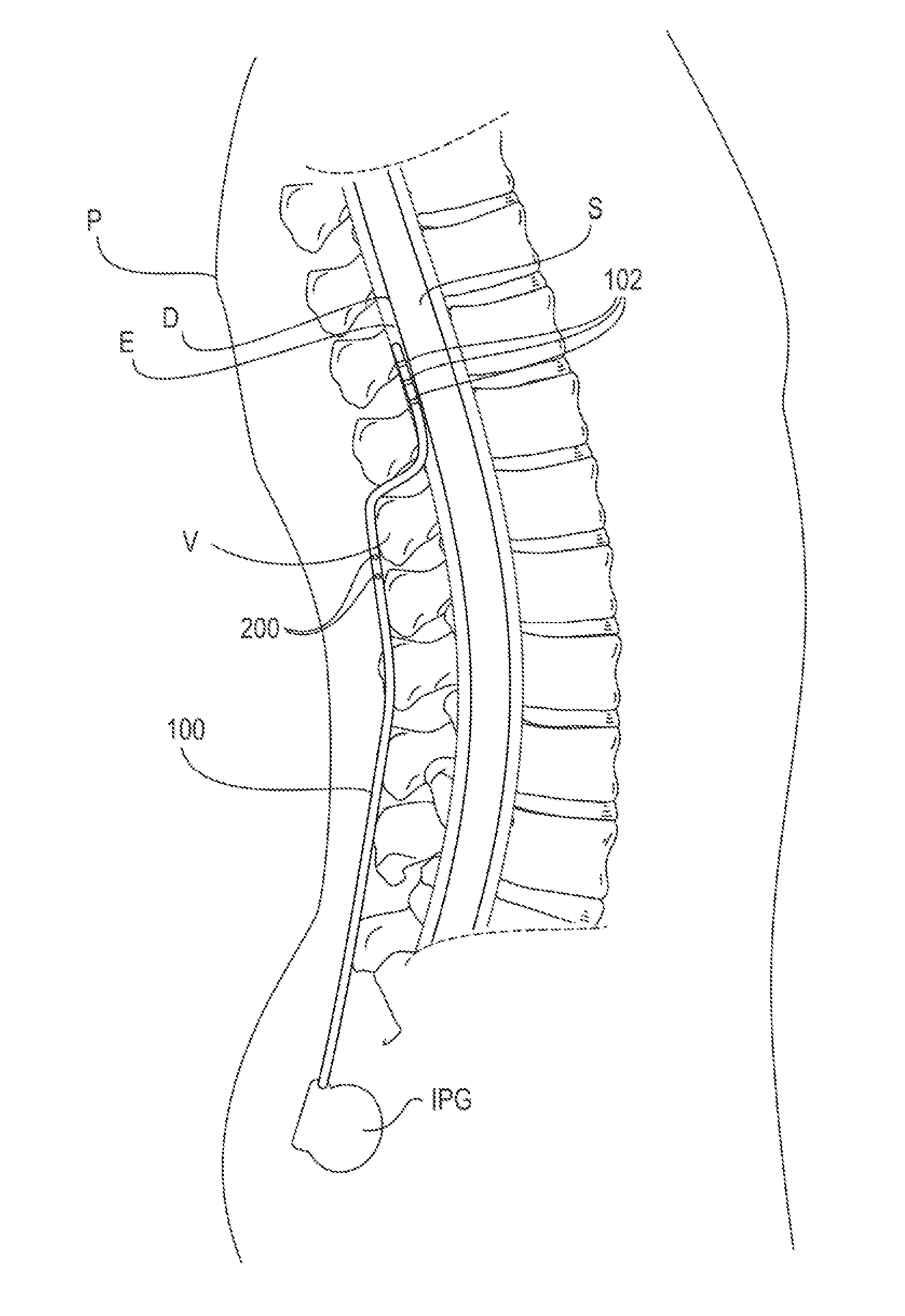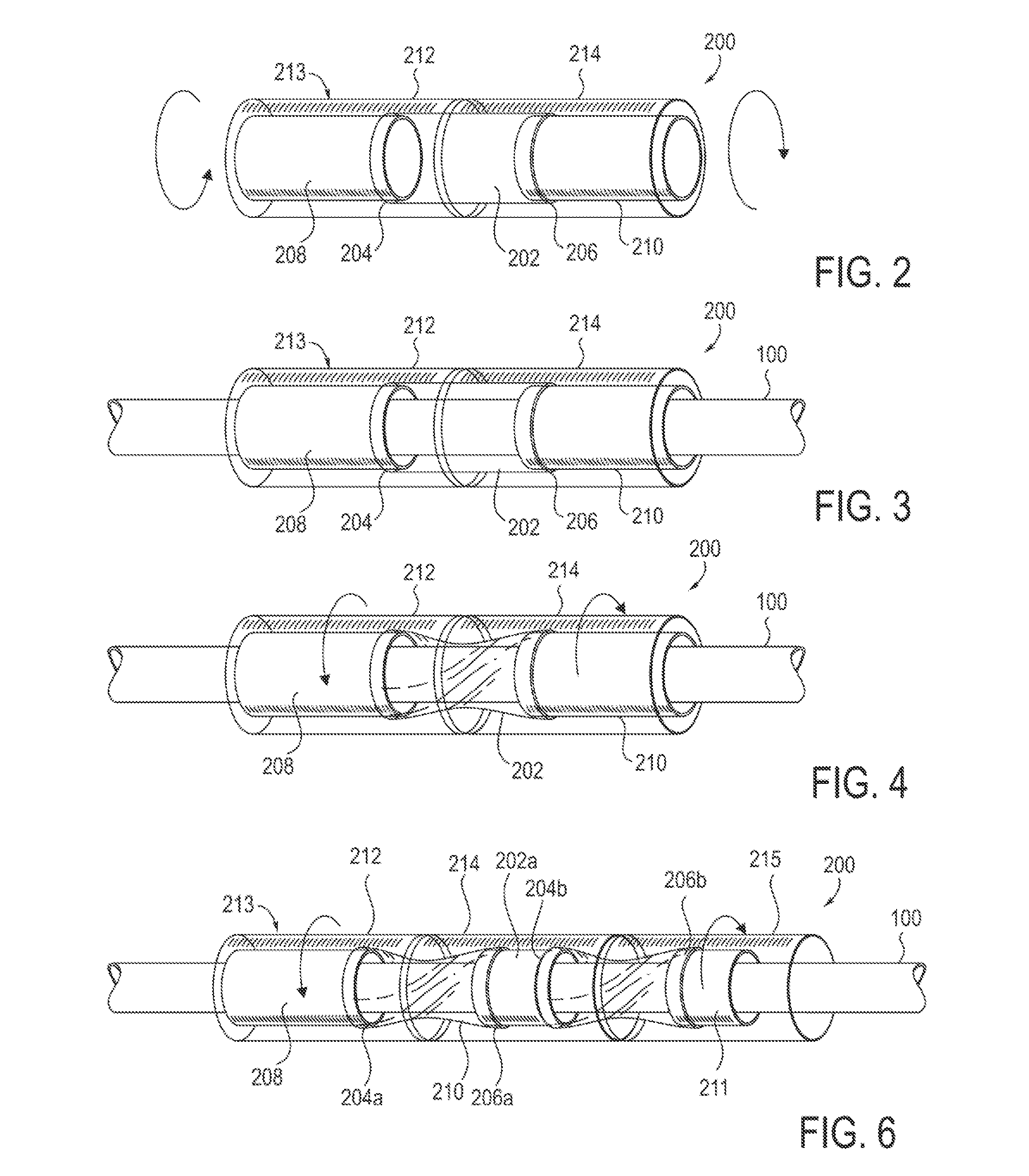Twist-grip anchors and methods of use
a technology of twist-grip anchors and anchors, which is applied in the field of twist-grip anchors and methods of use, can solve the problems of difficult to achieve the effect of facilitating movement resistance, reducing the level of engagement, and reducing the risk of fractur
- Summary
- Abstract
- Description
- Claims
- Application Information
AI Technical Summary
Benefits of technology
Problems solved by technology
Method used
Image
Examples
Embodiment Construction
[0027]The present invention provides devices, systems and methods for anchoring implantable medical devices to maintain an implanted position. In some embodiments, the medical devices are stimulation leads which are implanted near a portion of the neural anatomy for providing stimulation thereto. In some embodiments, at least one lead is advanced into the epidural space to apply stimulation energy to the spinal cord itself or to anatomies accessible via the epidural space, such as the dorsal root, dorsal root ganglion or peripheral nerves. FIG. 1 illustrates an example of such an implantable lead 100 advanced into the epidural space E. Here, the lead 100 is shown inserted between the vertebrae V, advanced within the epidural space E and positioned so that electrodes 102 disposed along its distal end are positioned against the dura layer of the spinal cord S. It may be appreciated that the lead 100 may be advanced further, such as to position the electrodes 102 near other spinal anat...
PUM
 Login to View More
Login to View More Abstract
Description
Claims
Application Information
 Login to View More
Login to View More - R&D
- Intellectual Property
- Life Sciences
- Materials
- Tech Scout
- Unparalleled Data Quality
- Higher Quality Content
- 60% Fewer Hallucinations
Browse by: Latest US Patents, China's latest patents, Technical Efficacy Thesaurus, Application Domain, Technology Topic, Popular Technical Reports.
© 2025 PatSnap. All rights reserved.Legal|Privacy policy|Modern Slavery Act Transparency Statement|Sitemap|About US| Contact US: help@patsnap.com



